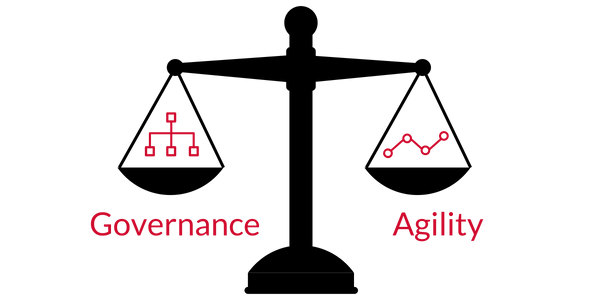I was recently interviewing IT executives of a fortune 500 company for insights into where they want to evolve their enterprise content management strategy. Among the expected desire for simpler technology capabilities, faster time to market, and friendlier user interfaces, one surprising element that stood out to me was the absence of tighter governance. When it did come up in conversations, those in charge of enterprise architecture equated the word governance to the phrase roadblock. The visceral reaction to the words of enterprise governance was one of dread and defiance; the perspective is that it blocks innovation, impedes the speed of change, and restricts applicability. Now, I am wondering if the desire to be agile is overriding the need to be compliant; whether innovation is only possible with the absence of control.
Enterprise Software
What is fundamental and core to any software implemented at the enterprise level is the ability to cater to the needs of the organization, rather than the individual. User groups with common business needs must adopt a standard solution that champions the mantra of “build once, use many.” Investments are shared, as are solutions, among various Business and IT groups. Standard operating procedures are created to glean the commonality from all areas of the organization. Once established, audit teams enforce standards. Governance becomes the cornerstone of any enterprise software to ensure compliance and consistency. To provide a solution to the enterprise is to ensure it satisfies the need of the enterprise and not any individual department.
Enterprise Governance
Most of my professional career has been spent working with large organizations on the best practices for implementing enterprise software. I’ve set up numerous programs where enterprise initiatives are handed down from the top, authorized committees make decisions, and implementations are carried out by a designated team of experts. These programs rely heavily on the executive sponsorships and the broad expertise of the implementation team. User groups, Business or IT, are encouraged to participate and provide a voice in the program. Decisions are elevated to the governing committee for a collective ruling. A comprehensive set of procedures, processes, checklists, guidelines, templates, and rules are established to standardize all enterprise implementations of the specific solution. Governance at its heaviest when it comes to enterprise software.
The Challenge with Governance
This approach of full control in the name of the effectiveness of the enterprise software is often difficult and time-consuming to implement. Programs like these usually take years to mature; just confirming the members of the committees and the identification of stakeholders can take months. The drafting of governing rules, processes, and templates may require expertise not readily available in the organization. While the idea of committee-driven decision-making sounds logical for enterprise initiatives, it’s usually difficult to ensure all stakeholders with varying responsibilities are in alignment and agree on directions. One IT executive, in charge of a large enterprise program, compared the process to that of the United Nations. Then there is the challenge of forcing user groups to agree on common usage patterns. For example, a standard taxonomy is a typical dependency of any enterprise content management solution. Often, it can take months or years for a team to construct an enterprise taxonomy. However, as soon as they think they’ve captured it, the business has already changed, and the taxonomy needs to be updated. Changing needs are thus infrequently tolerated, and when insisted, enhancements for changes are implemented slowly.
The Challenge with Agility
What I encountered with the IT executives during the interview sessions was the common desire to stay relevant and valuable. With the advancement of technology, the world is constantly changing and at an alarming speed. To keep up, IT leaders must become agile to respond to their customers promptly; they also need to be innovative to support their customers’ changing needs adequately. The very idea of a large program with rules and restrictions is in direct contrast with the ability to adapt and change quickly. But, in giving up governance, are we giving up the benefits of enterprise software, which is the ability to build once and use many? In giving up standards to guide implementations, are we giving up reuse and repeatability? If everyone within the organization implemented their technology solutions in their way, using their tools, and for their individual needs, we would have a kaleidoscope of software that will require a variety of skills and expertise to support – inevitably introducing additional risk and cost to the enterprise.
Where is the Balance?
Just like everything in life, we need balance and variety. There isn’t always a one size fits all solution, and it’s not always cost-effective to custom fit every size. A balance is needed for every situation where the best solution is a combination of enterprise governance and agile implementation. Finding that equilibrium will require open minds and iterative execution. A full tool belt of approaches and capabilities is also beneficial. In that sense, agility with governance allows transformation to be incremental and sustainable.
If you’re interested in finding out how enterprise software can help your business, request a consultation today.

